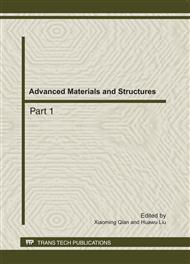p.1273
p.1279
p.1285
p.1293
p.1299
p.1303
p.1308
p.1312
p.1316
Isothermal and Non-Isothermal Crystallization Behavior of Poly(L-Lactic Acid) with Nucleating Agents
Abstract:
The effects of Amide type nucleating agents SX , talc and nucleating agents SX combination with talc on crystallization behavior of poly (L-lactic acid)(PLLA) were analyzed by means of Differential scanning calorimetry (DSC).The results of non-isothermal crystallization showed that SX is an efficient nucleating agent. The crystallization peak temperature and degree of crystallization of PLLA sample with 0.6 wt% SX are both higher than that of PLLA sample with 4 wt% Talc,which proved that the nucleating ability of SX is stronger.Nucleating agent SX and talc combination has obvious coordination effects, the sample of PLLA/0.2 wt % SX + 4 wt % talc has the minimal crystallization undercooling temperature, the highest crystallization peak temperature and crystallinity. Isothermal crystallization kinetics of PLA showed that when the four nucleating agents added in are all with the Avrami exponent n between 2.1-2.5, crystallization tended to be heterogeneous nucleation. When the nucleating agents added in are 0.6 wt%, the crystallization time is greatly decreased to 0.75min. Meanwhile, the PLLA crystallinity could be significantly increased by adding SX nucleating agents; besides, with the decrease of the isothermal crystallization temperature, the half crystallization time of the PLLA/0.6 wt% SX sample was decreased.
Info:
Periodical:
Pages:
1299-1302
Citation:
Online since:
September 2011
Authors:
Keywords:
Price:
Сopyright:
© 2011 Trans Tech Publications Ltd. All Rights Reserved
Share:
Citation:


